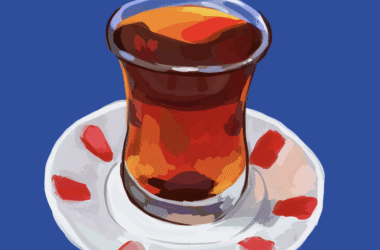While most people find an excuse to get out and party on St. Patrick’s day, such as “my great uncle was Irish,” or “Liam Neeson is my favourite actor,” or “I just really, really love Lucky Charms,” many don’t really know why they’re celebrating, or even who Saint Patrick was. There are a lot of reasons to love Ireland, so there’s no better place to start than having a little crash course on the history of St. Patty.
Saint Patrick was a Christian missionary from Wales and the most widely recognized patron saint of Ireland. While the precise dates of his life aren’t known, he is thought to have worked in Ireland during the second half of the fifth century. We celebrate him on March 17, the anniversary of his death. And while most of the world joyously celebrates all things Irish, the occasion is sometimes observed with much more solemnity in Ireland itself.
Patrick was captured and worked as a slave in Ireland for six years before he fled back to his native Wales. He joined the church there and returned to Ireland years later as a missionary. A “two Patricks” theory has casued some contention among historians. The theory states that the efforts of two men, Patrick and Palladius, have been blended together into a single account of one man, today’s widely-recognized St. Patrick. However, historians have made efforts to distinguish the histories of the two men, and have been fairly successful, citing evidence of the differing chronologies of Irish presence between the two men.
The two things most commonly associated with St. Patrick are shamrocks and snakes. St. Patrick’s banishment of all the snakes from Ireland is a story many have heard, but one which seems to have been embellished, since Ireland apparently never had any snakes to begin with. The shamrock became associated with St. Patrick when he used it to illustrate the idea of the Holy Trinity existing together in one entity. However, the shamrock was sacred in pagan rituals as well, as its colour and shape represented rebirth and eternal life.
Interestingly, St. Patrick was never formally canonized by the Pope. This is because during the first thousand years of Christianity, when widely-recognized holy people died, the local church, and not the Pope, would decide if they could be celebrated as saints. Nevertheless, he is on the Catholic List of Saints, and March 17 is a feast day on the liturgical calendar of the Episcopal Church.
As interesting as St. Patrick’s history is, North Americans have taken the day as a reason to celebrate everything we love about the Emerald Isle. From Guinness to James Joyce, we have a lot to thank the Irish for, including music and those enticing accents. We all have our favourite actors who claim Irish ancestry, like Patrick Dempsey, Jonathan Rhys-Meyers, Colin Farrell, Peter O’Toole, and Conan O’Brien. Ireland has also given us some amazing musical talent over the years; Niall Horan of One Direction fame, Enya, The Irish Tenors, and of course Bono all spring to mind, and even Bruce Springsteen has a little luck of the Irish to his name. General knowledge or not, many great authors are of Irish descent too. The likes of Samuel Beckett, F. Scott Fitzgerald, C.S. Lewis, Bram Stoker, Jonathan Swift, and Oscar Wilde all owe some of their heritage to Ireland.
So when you raise your glass of green beer or Irish whiskey on March 17, give a toast to the man of honour himself along with the many contributions Irish culture has given us.






